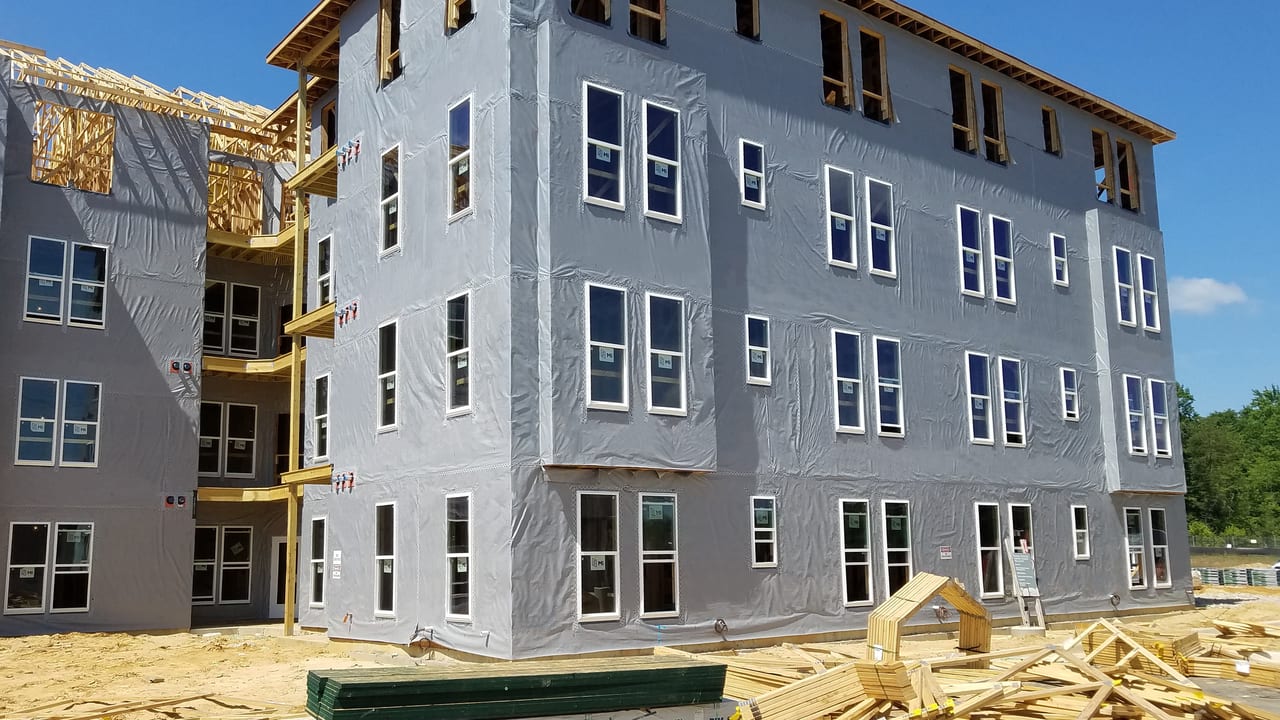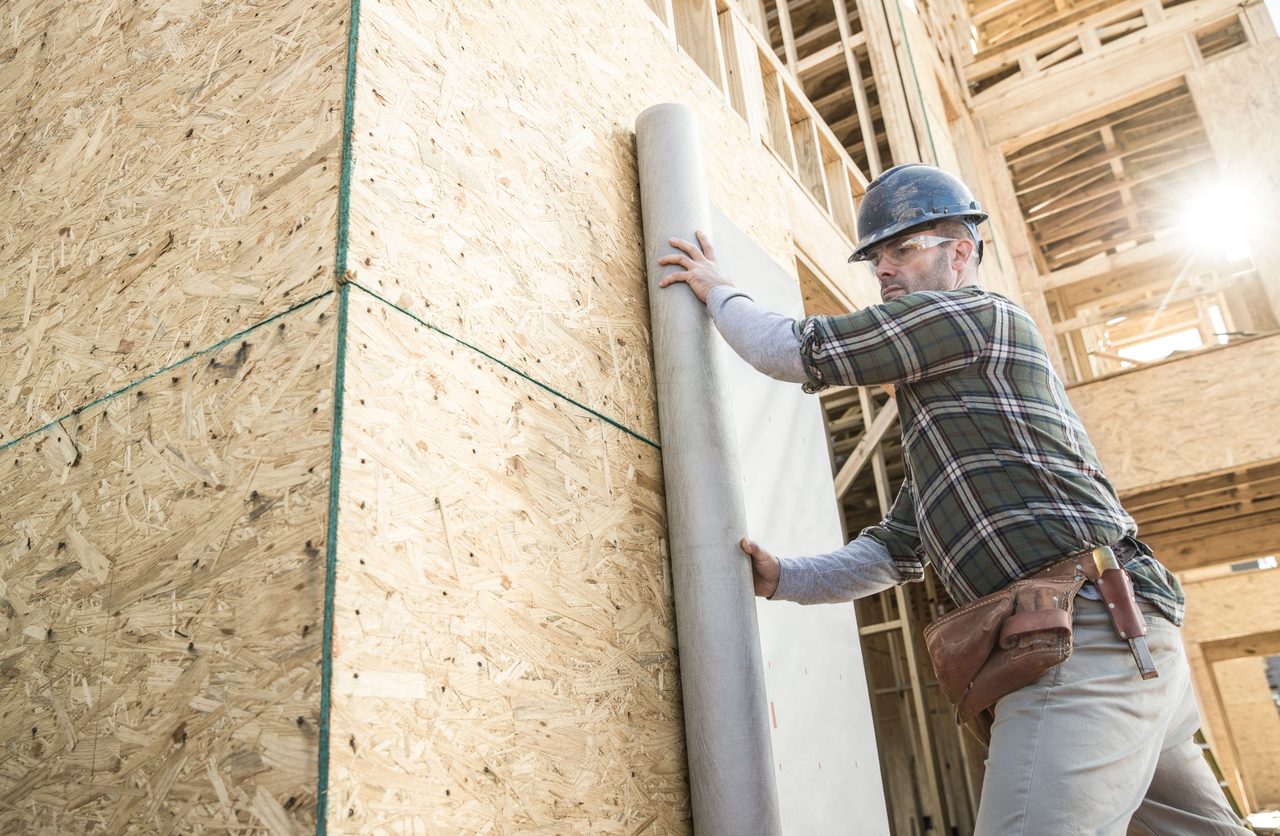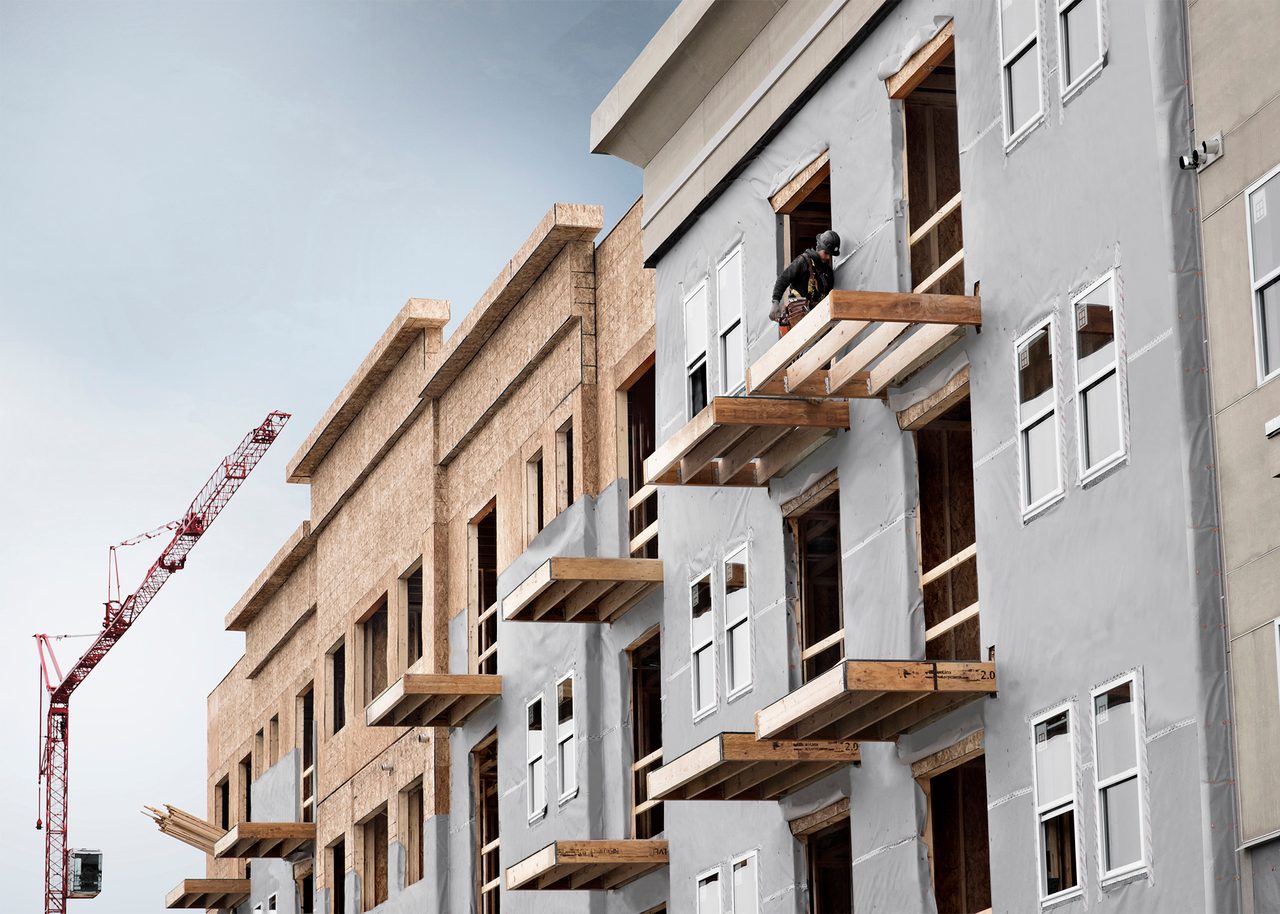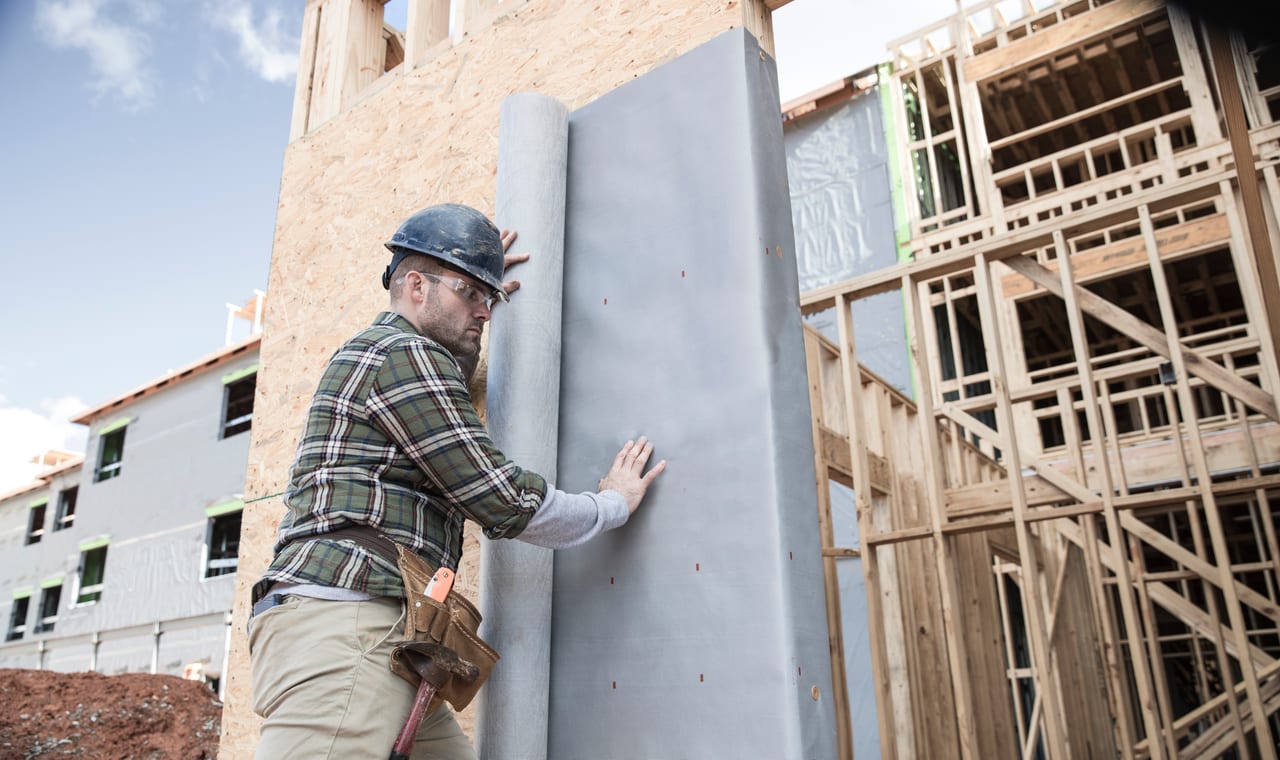
CEU ARTICLE
Advanced Threats Met with Advanced Technology
How breakthroughs in weather-resistant barriers can improve occupant well-being in all climates
By Kendra Palmer

WRBs are vital to the construction of new residential and light commercial, multifamily, and mixed-use buildings to achieve occupant well-being, safety and comfort. New WRB technology can meet and exceed evolving standards for healthier buildings and homes. All photos courtesy of TYPAR.
Learning Objectives:
By the end of this course, the reader should be able to:
- Recognize the necessity for WRBs in modern construction for the safety and wellness of inhabitants.
- Explain the concept of wall cavities and how controlling air movement in wall cavities positively affects inhabitants’ comfort and well-being.
- Describe how properly draining exterior wall cavities improve the durability of a building.
- Differentiate WRBs according to environment, performance, and health criteria and remember other considerations before installation.

Weather-resistant barriers (WRBs) are essential in the construction of new residential and light commercial, multifamily and mixed-use buildings. They help achieve occupant well-being, safety and comfort. With more people working and playing at home, as well as more commercial buildings constructed to higher standards, new WRB technology can meet and exceed standards for healthier buildings and homes. Technology can be designed to meet building requirements, a variety of climates, and the effects of climate change. Indoor air quality (IAQ) should increase comfort and even foster well-being for building occupants. Indeed, the EPA has shown that on average, people spend up to 90 percent of their time indoors. Indoor spaces need to be safe, durable, comfortable and efficient. People want to work and live in healthier buildings and homes.
The terminology and function of WRBs can be confusing, making it difficult to compare products. Sometimes WRB may refer to a water-resistive barrier, but there is a difference and they have distinct purposes. For the sake of this piece—and taking the definition from The American Architectural Manufacturers Association—a WRB is a weather-resistant barrier, a surface or wall responsible for preventing air and water infiltration into the structure’s interior.
WRBs used to be categorized as products that prevent water from entering buildings while under construction. Today, WRB products comprise a broader product group that prevents water, air, thermal, and vapor (or WATV) transmission from transferring from inside or outside of a home or building. WRBs, as part of a tight building envelope, can reduce heating and cooling costs up to 15 percent in some cases—while protecting buildings from harsh elements and improving comfort for occupants.1
Energy-efficient buildings with comfortable environments need air tightness and reduced thermal bridging to lower heating and cooling costs, and controlled moisture is necessary to keep building occupants comfortable and healthy. WRBs are critical in meeting improved IAQ and other needs in modern homes and buildings.
Modern WRBs are made of lightweight, synthetic material that are applied to homes and commercial buildings to protect them against air leaks, water, and moisture infiltration. They function as a shell for buildings—liquid that has penetrated the exterior finish can’t get through, but water vapor can escape. Though resistant to weather, they allow water vapor to pass from inside a building to its exterior, which prevents mold and rotting and increases a building’s energy efficiency and comfort. These materials are resistant to damage during installation, and they provide exceptional air- and water-blocking performance.
One of the differences between WRBs—sometimes referred to as “housewraps”—and building paper is the additional gap created by spacers, allowing moisture to drain from wall assemblies more quickly. Also the drainage channels form an unobstructed path behind cladding, avoiding the possibility of ponding along siding edges with traditional barriers.
Scientific History of WRBs
Already applied in successful reconstruction of dated European buildings, exterior insulation and finish systems (EIFS) were introduced in the United States in 1969. The evolution of wraps and barriers, starting in the early 1970s, saw innovations in different types of sheathing technology; these iterations are responsible for most of the water and air resistance in wall assemblies to date. The housewrap of that time—spurred by the energy crisis calling for more efficient products—provided a way to seal the exterior of a building and reduce air leakage. But other benefits of these barriers were apparent, including the ability to withstand high winds and offer flexibility at lower temperatures, and the ability to restrict air flow. In addition, the barriers were condensation-reducing and lightweight. The 1970s also brought asphalt-saturated felt paper, required by building codes to be installed as a WRB instead of paper-faced gypsum sheathing.
Concerns about energy conservation and product durability in the 1980s brought about gypsum board sheathing that replaced the paper facing with a fiberglass mat facing. This could be exposed to normal weather for longer periods of time compared to paper-faced sheathing. The fiberglass mat surface was a primitive but effective WRB surface. Fibrous building wraps were used on both residential and commercial construction mostly to create an air barrier, although some provided a WRB, too.
Other rigid board stock products came into the market in the ‘90s, and were meant to act as a sheathing or substrate behind cladding on an exterior wall. Most of these products needed to be covered quickly since they deteriorated rapidly in the elements. In the following decade, changes in the International Building Code (IBC) required WRBs to be applied to sheathing. Membranes were applied over the sheathing, but they were labor-intensive when it came to irregular areas. Of course, all the products and older versions of the modern technology are available and used to some extent today, which can complicate things, but this piece will focus on new construction.
About 10 years ago, the technology for fluid-applied membrane barriers continued to develop and they became more effective, allowing for thinner applications. Testing showed they were highly effective as a WRB and air barrier. The next innovation in this technology offers both a WRB and air barrier directly in the fiberglass-mat-faced gypsum sheathing, as well as an arsenal of other means to completely seal other openings. This reduces the dependence for effectiveness on the installer and utilizes the best products and their capabilities.
It is important that all professionals are current on these developments to ensure using the best-available solution for a project. The installer needs to be qualified and to demonstrate completed training and experience with WRB installation and then submit to testing and inspection once installation is done. A new building’s envelope should be built to control air leakage, avoid condensation in the interior wall assembly, and prevent water intrusion. Joints, penetrations, and paths of moisture and air infiltration should be made as watertight and airtight as possible but also be flexible, allowing for some movement of the system with variations in temperature and moisture.
Section 1: Why WRBs?


It is important that professionals are qualified to install WRBs and then submit to testing and inspection once installation is done. A new building’s envelope should help control air leakage, avoid condensation in the interior wall assembly, and prevent water intrusion.

WRBs offer further durability within high-performance energy systems in new buildings; they help increase total insulation R-values, help control moisture (and hence, mold), and increase energy efficiency, all helping to minimize maintenance costs.
"The minimum requirements in green standards alone may lack comprehensive measures to ensure long-term durability of the enclosure assemblies... "

